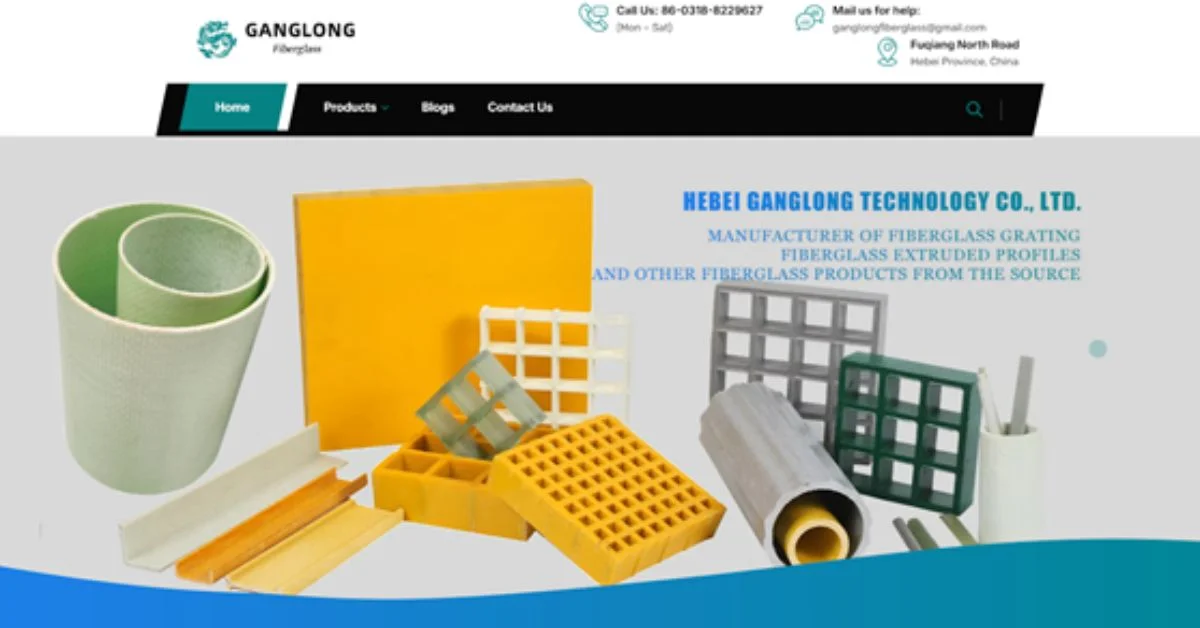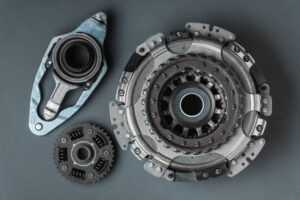variety of scenarios
Cable ladders are essential for a variety of scenarios where reliable, efficient, and organized cable management is needed. These systems help support and route cables in both high-demand environments and large-scale infrastructure projects.
GangLong Fiberglass specializes in providing high-quality FRP (Fiberglass Reinforced Plastic) Cable Ladders, which offer efficient and safe cable management solutions. The company supplies a complete range of hardware and accessories to facilitate a seamless installation. Their cable ladders are designed to route cables along ceilings, walls, and floors, ensuring the cables are well-managed and secure. Below are key situations where using a cable ladder is crucial:
Large-Scale Infrastructure Projects
- High Volume of Cables: Large infrastructure projects, such as power plants, factories, or telecommunication networks, often involve extensive cabling systems. These projects require cable ladders to support large quantities of cables, ensuring safe, organized, and accessible cable routing.
- Heavy Duty Support: In environments with heavy-duty cabling needs, such as electrical lines, data transmission cables, and control wiring, cable ladders provide the required support to keep the cables stable and prevent damage caused by excessive weight or tension.
- Outdoor and Harsh Environments: For outdoor applications or installations in extreme environments, cable ladders—especially those made with fiberglass-reinforced materials like chopped strand mat or fiberglass sheets—are necessary to resist corrosion from weather elements, chemicals, or moisture. These materials ensure durability and long-lasting performance in harsh conditions.
Data Centers
- Efficient Cable Management: Data centers house a large number of servers and networking equipment that require efficient and structured cabling. Cable ladders help organize and route power and data cables, keeping them off the ground and ensuring proper airflow, which is essential for cooling and maintenance.
- Space Efficiency: As data centers grow, cable ladders are crucial for scaling the infrastructure. They allow for vertical or horizontal cable management, ensuring that cables are neatly arranged while providing flexibility for future expansions or changes in configuration.
- Safety and Accessibility: Cables routed in ladder systems are easier to access for troubleshooting, maintenance, and upgrades, minimizing downtime. A properly installed cable ladder system also reduces the risk of overheating and cable damage, both of which can cause system failures or fires. Cable ladders made with fiberglass or fiberglass sheets also offer high resistance to heat, which is essential in high-energy environments like data centers.
Industrial Installations
- Heavy Industrial Wiring: Factories, manufacturing plants, and industrial facilities typically require the routing of heavy, high-power cables that control machinery, lighting, and other vital equipment. A cable ladder system supports these cables and helps prevent physical damage from heavy machinery or wear over time.
- Harsh Operational Conditions: Many industrial environments involve exposure to chemicals, high temperatures, or physical stress. In these situations, fiberglass or fiberglass-reinforced cable ladders provide the needed durability, resistance to corrosion, and flexibility to adapt to the rigors of such environments.
- Maintaining Safety Standards: Industrial installations often need to meet strict safety standards for fire prevention and electrical safety. A cable ladder system, combined with proper grounding and cable separation, helps minimize fire hazards by improving airflow around cables and reducing the risk of overheating.
Telecommunications and Network Cabling
- Telecommunication Facilities: In telecommunications hubs and switching stations, the network infrastructure relies heavily on organized cable management. Cable ladders are used to support and route fiber optic cables, copper wires, and other types of network cabling in an efficient and scalable manner.
- Long Cable Runs: For installations requiring long cable runs—such as across large buildings or from one floor to another—cable ladders ensure that cables are securely supported over distances, with appropriate spacing to avoid unnecessary strain or tangling.
- Expansion and Upgrades: As network requirements evolve, cable ladders can easily be expanded or modified. Whether adding new cables, transitioning to higher-capacity systems, or accommodating more fiber optics, cable ladders offer the flexibility to support future upgrades.
Commercial Buildings and Office Complexes
- Organized Cable Routing: In office buildings, hotels, or commercial complexes, cable ladders are used to support and organize the electrical wiring, lighting control systems, data cables, and HVAC systems. They help ensure the building’s infrastructure remains tidy, accessible, and compliant with safety standards.
- Low-Cost and Scalable Solutions: For commercial installations, cable ladder systems are often chosen for their scalability. Whether the project starts small and expands over time or needs to accommodate a significant amount of data and power cables, cable ladders can grow with the needs of the building.
- Preventing Cable Damage: As commercial buildings often have complex layouts, cable ladders help avoid damage to cables from foot traffic, equipment, or other moving elements. Additionally, cables routed through ladders are protected from bending and kinks, which can degrade performance over time.
Energy and Utility Facilities
- Power Distribution and Control Systems: Power plants, electrical substations, and utility facilities often use cable ladders to support heavy-duty electrical cables that connect equipment and distribution panels. These environments demand robust cable management to ensure the safety and efficiency of electrical systems.
- Hazardous Environments: Many energy and utility installations involve environments with high voltage, hazardous chemicals, or extreme temperatures. In these cases, fiberglass cable ladders are essential due to their resistance to corrosion and heat, offering an added layer of protection for the cables and the personnel working in these environments.
- Emergency Access and Maintenance: Given the importance of uptime in these sectors, cable ladders facilitate quick access to cables for repairs, inspections, and emergency maintenance, ensuring that the systems remain operational with minimal downtime.
Transportation Systems (Airports, Railways, etc.)
- Cable Management for Critical Systems: Airports, train stations, and other transportation hubs have complex infrastructure that requires the routing of numerous cables for signaling, communication, and power distribution. Cable ladders provide a reliable, easy-to-maintain solution for managing these cables.
- Resilient Construction: Given the potential for heavy equipment, high-traffic areas, or exposure to various elements, cable ladders used in transportation systems are often designed with corrosion-resistant materials such as fiberglass to ensure they can withstand the rigors of these high-demand environments.
- Public Safety: Efficient cable management is crucial in ensuring that systems like emergency lighting, communication networks, and security cameras are always operational. Cable ladders help prevent disruptions and allow for efficient system checks and repairs.
Retail and Hospitality Installations
- Support for Low-Voltage Cables: Retail stores, restaurants, and hotels often use cable ladders to organize cables for lighting, point-of-sale systems, audiovisual equipment, and security systems. These environments require cable management systems that are both aesthetically unobtrusive and highly functional.
- Flexible and Scalable Solutions: Retail environments often undergo renovations and reconfigurations. Cable ladders offer flexibility to accommodate changes in layout, providing a solution that can be quickly adjusted as the building’s needs evolve.
If you find this article helpful, click here for more.









